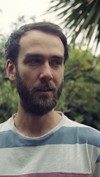The Danish photojournalist – who’s been documenting Colombia’s civil conflict since 2010 – was working on an ambitious portrait of the country as it navigated the complexities of newfound peace, following five decades of conflict during which some 220,000 lives were lost.“Colombians would say ‘We’re more than cocaine and coffee,‘ but they also can’t ignore that over 90 percent of America’s cocaine comes from Colombia”
‘FARC guerrilla fighters Daniela, Yuli, and Nancy’ Photo: Mads Nissen
‘Hidden cocaine laboratory, Santa Rosa de Osos municipality’ Photo: Mads Nissen
‘Joan, Jon and Brian make their living carrying out robberies and assassinations’ Photo: Mads Nissen
‘Alexandra Mazo, aged 12’ Photo: Mads Nissen
He tells me that a lot of Colombians would hate the show. They’d say, We’re more than cocaine and coffee. And they are, he says, but they also can’t ignore that over 90 percent of all cocaine on American streets comes from Colombia.“They have never produced as much cocaine as they are doing right now. I know they want a different reputation than Narcos, but it’s just like- it is there, it is happening, so maybe it’s time to face it a bit more.”I ask how the Netflix series differs from the reality he saw. “I think the really high-level drug people aren’t running around with guns anymore. They’re running around in suits and maybe they’re not even living in Colombia,” he says.“What I hear from a lot of places on the ground, including the diplomats and the people in charge at the UN anti-narcotics division, is that the drug production in Colombia has been taken over by the Mexican cartels.”“Sailing down a river, driving on crappy roads, even riding a mule into a minefield – Nissen knows the dangerous areas better than the safe areas”
‘Artificial lighting is used to enhance cannabis production. Miranda, Cauca Dep.’ Photo: Mads Nissen
‘The funeral of a murdered indigenous and social leader’ Photo: Mads Nissen
‘Didiller Angulo, aged 9’ Photo: Mads Nissen
‘Over and the dog Killer. FARC camp’ Photo: Mads Nissen
